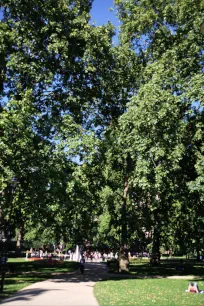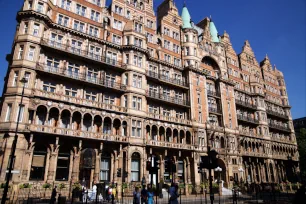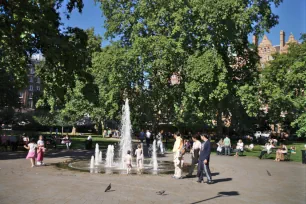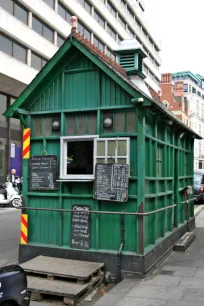London’s Russell Square is home to some historic landmarks, the most notable being the Russell Hotel, an exuberant Victorian building. The center of the square is occupied by a small but enjoyable park.

Located in Bloomsbury in the London borough of Camden, Russell Square is situated near the British Museum and the main buildings of the University of London.
Past History
The square was named for the Earls and Dukes of Bedford, whose surname was Russell. The square sits on the site that once held the gardens of the Dukes’ former home, Bedford House.
Historically, the square was generally lined with large upper middle class homes, many of which still stand today. It was also a favorite area of many of London’s finest writers, poets, and artists, including T.S. Eliot and Thomas Lawrence, many of whom kept homes on the square.
Russell Hotel


The most eye-catching landmark at Russell Square is Hotel Russell, which opened in 1900. Still standing, this structure was the epitome of opulence, and much of it was designed by architects who had a hand in the creation of the ill-fated Titanic. The hotel’s restaurant is nearly identical to the restaurant that was aboard the ship.
The building’s architecture is a magnificent example of Victorian architecture. It has a detailed red terra-cotta facade with beautifully sculpted balconies. The interior is just as exuberant as the exterior, with lots of colorful marble.
Fountain
In the middle of the square is a quiet park that takes up most of the space. In 2002, when the park was reconfigured to resemble its original nineteenth-century layout, a fountain was added in the center, featuring jets that spray directly from the pavement. It has become a favorite play area for local children.

Cabman’s Shelter
Also on the square sits a Cabman’s Shelter, one of only about thirteen that remain within the city limits. These shelters were designed to protect the operators of early Hansom Cabs (horse-drawn carriage) from the elements. These pioneer taxi drivers could also buy refreshments or snacks at the shelters. It is a Grade II listed building, a designation which is given to particularly significant buildings of more than local interest.

